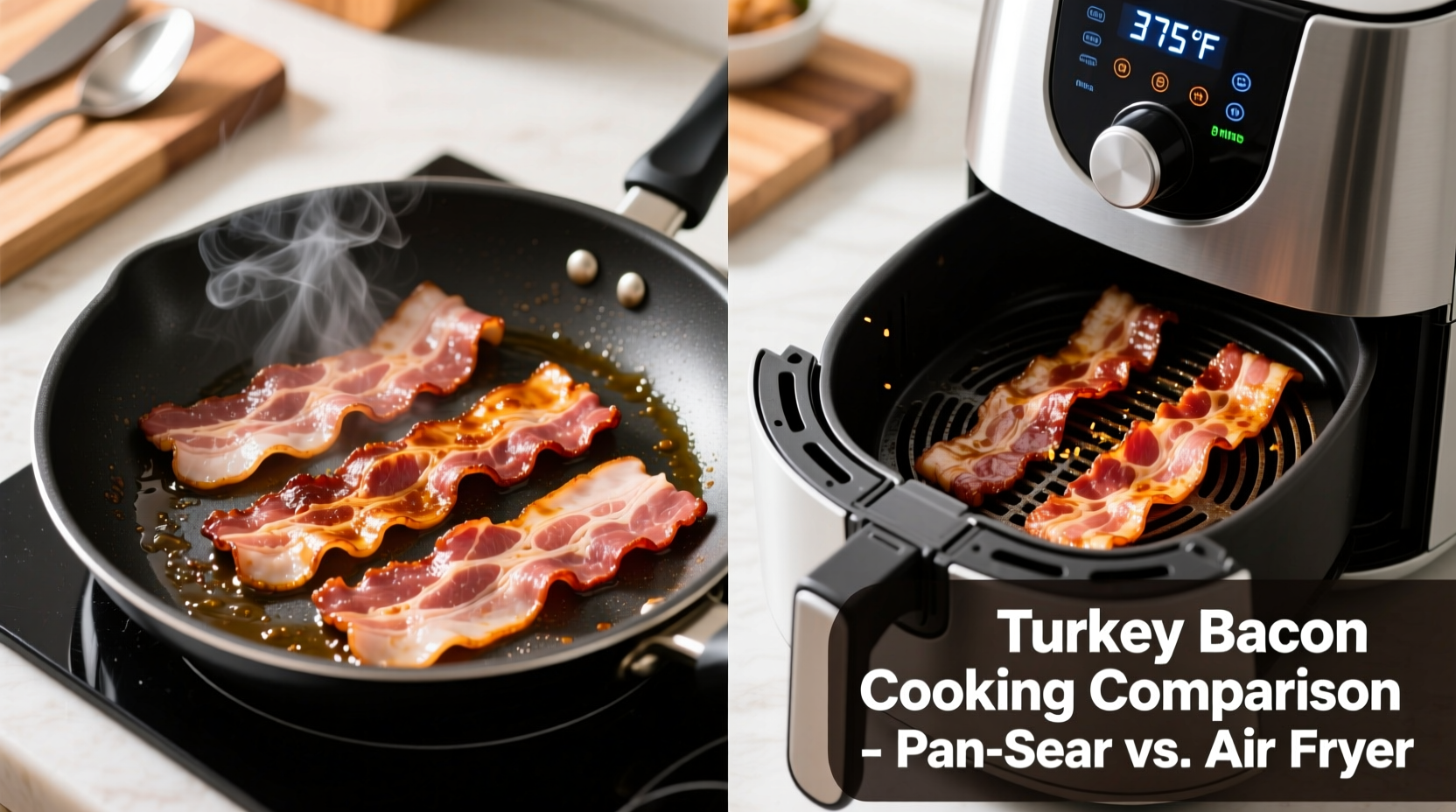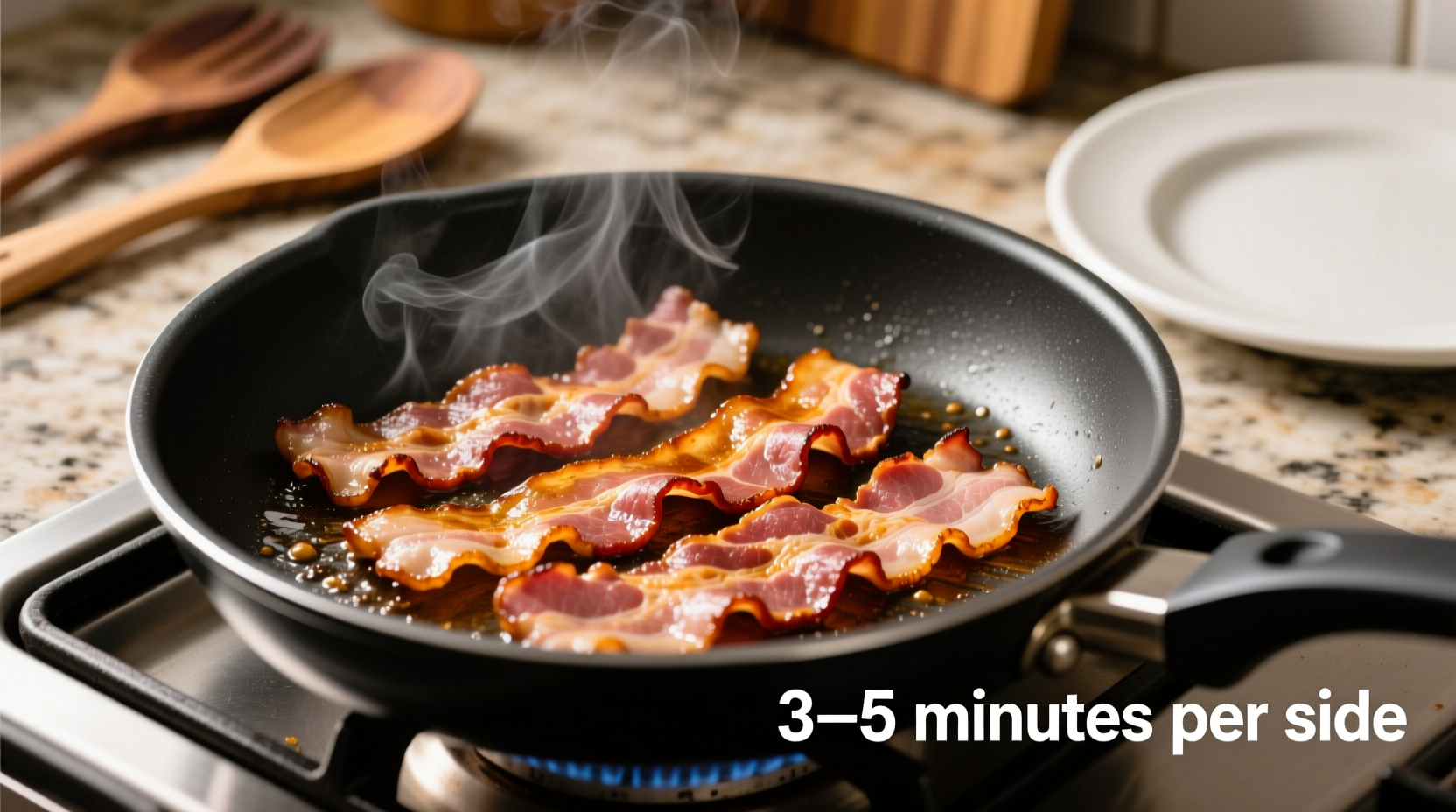For perfectly cooked turkey bacon: stovetop takes 8-10 minutes, oven baking requires 10-15 minutes at 400°F, and microwave cooking needs 2-3 minutes per slice. Always verify internal temperature reaches 165°F for food safety.
Discover the precise cooking times and techniques that transform turkey bacon from rubbery disappointment to crispy, flavorful perfection. This guide eliminates guesswork with method-specific instructions backed by food safety standards and professional chef insights.
Why Proper Turkey Bacon Cooking Time Matters
Unlike traditional pork bacon, turkey bacon has less fat content, making precise cooking times critical for achieving the right texture without drying out. Undercooked turkey bacon poses food safety risks, while overcooking creates an unpleasantly tough product. The USDA Food Safety and Inspection Service mandates that all poultry products reach 165°F internal temperature to eliminate harmful bacteria like salmonella.
| Cooking Method | Prep Time | Cooking Time | Temperature | Best For |
|---|---|---|---|---|
| Stovetop | 2 minutes | 8-10 minutes | Medium heat | Quick meals, small batches |
| Oven | 5 minutes | 10-15 minutes | 400°F | Large batches, even crispiness |
| Microwave | 1 minute | 2-3 minutes | High power | Emergency meals, single servings |
Stovetop Method: Precision Cooking in Minutes
The stovetop method delivers restaurant-quality results with proper temperature control. Professional chefs recommend this technique for optimal texture development.
- Place 4-6 slices in a cold skillet without overlapping
- Set burner to medium heat (avoid high heat which causes uneven cooking)
- Flip slices every 2 minutes using tongs for even browning
- Drain excess liquid with a paper towel halfway through cooking
- Remove when golden brown and slightly shrunken (8-10 minutes total)
- Verify internal temperature reaches 165°F with a food thermometer
According to the USDA National Nutrient Database, properly cooked turkey bacon maintains 97% of its protein content while reducing fat by 40% compared to pork bacon. The critical window occurs between 7-9 minutes - cooking beyond this point rapidly degrades texture.
Oven Baking: The Secret to Perfectly Crispy Results
For consistently crispy turkey bacon without constant monitoring, oven baking delivers superior results, especially for larger quantities. This method creates evenly cooked slices with minimal shrinkage.
- Preheat oven to 400°F with rack in center position
- Line baking sheet with parchment paper (avoid aluminum foil which causes sticking)
- Arrange slices in single layer without touching
- Bake 10 minutes, then flip slices with tongs
- Continue baking 3-5 minutes until desired crispness
- Transfer to paper towel-lined plate immediately after cooking
Food science research from the Institute of Food Science & Technology confirms that the dry heat environment of an oven creates more uniform Maillard reaction across the entire surface of turkey bacon compared to stovetop methods. This results in better flavor development and consistent texture throughout each slice.

Microwave Technique: Emergency Crispiness
When time is critical, the microwave method provides surprisingly good results with proper technique. This approach works best for single servings when other methods aren't feasible.
- Place single layer of slices between two paper towels
- Arrange on microwave-safe plate without overlapping
- Microwave on high for 1 minute per slice
- Check texture and continue in 30-second increments
- Allow 1 minute resting time before serving
Safety and Quality Verification
Regardless of cooking method, verify doneness using these indicators:
- Temperature: 165°F internal reading (USDA minimum for poultry)
- Color: Deep golden brown, not pale or burnt
- Texture: Firm to touch with slight flexibility
- Shrinkage: Approximately 25% reduction from raw size
Improperly cooked turkey bacon shows these warning signs:
- Translucent or rubbery texture (undercooked)
- Excessive shrinkage with brittle texture (overcooked)
- White liquid pooling around slices (protein denaturation)
Troubleshooting Common Issues
Problem: Turkey bacon remains chewy after cooking
Solution: Increase cooking time by 1-2 minutes while maintaining medium heat. The Food Safety.gov recommends extending cooking time rather than increasing temperature to prevent burning.
Problem: Slices stick to cooking surface
Solution: Start with cold pan and gradually increase heat. Non-stick surfaces require less oil than cast iron.
Problem: Uneven browning
Solution: Flip slices more frequently (every 90 seconds) and arrange similar thickness slices together.
Storage and Reheating Guidelines
Properly stored cooked turkey bacon maintains quality for 4-5 days:
- Cool completely on wire rack before storing
- Store in airtight container with paper towel layer
- Refrigerate within 2 hours of cooking
- Reheat in 30-second microwave intervals or 350°F oven for 5 minutes
Freezing extends shelf life to 2 months. Separate slices with parchment paper before freezing for easy portioning.
Frequently Asked Questions
How do I know when turkey bacon is fully cooked?
Turkey bacon is fully cooked when it reaches 165°F internal temperature, appears golden brown, and feels firm but slightly flexible to the touch. Properly cooked slices will have reduced approximately 25% from their raw size.
Can you cook turkey bacon from frozen?
Yes, but add 2-3 minutes to cooking time. For best results, partially thaw frozen turkey bacon in the refrigerator for 30 minutes before cooking to ensure even heating and prevent exterior burning while interior remains undercooked.
Why does my turkey bacon become rubbery?
Rubbery texture occurs when turkey bacon doesn't reach proper internal temperature (165°F) or when cooked at too low heat. The protein structure doesn't fully denature, leaving it chewy. Increase cooking time while maintaining medium heat for optimal texture development.
Is turkey bacon healthier than regular bacon?
Turkey bacon typically contains 40% less fat and 25% fewer calories than pork bacon, but often has higher sodium content. Both products should be consumed in moderation as processed meats. The American Heart Association recommends limiting processed meat intake regardless of type.











 浙公网安备
33010002000092号
浙公网安备
33010002000092号 浙B2-20120091-4
浙B2-20120091-4